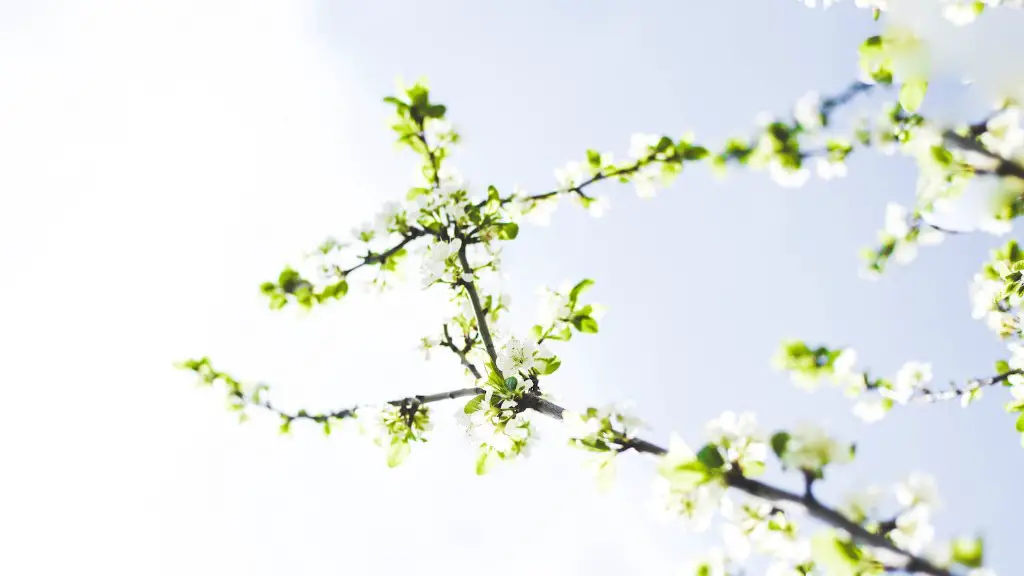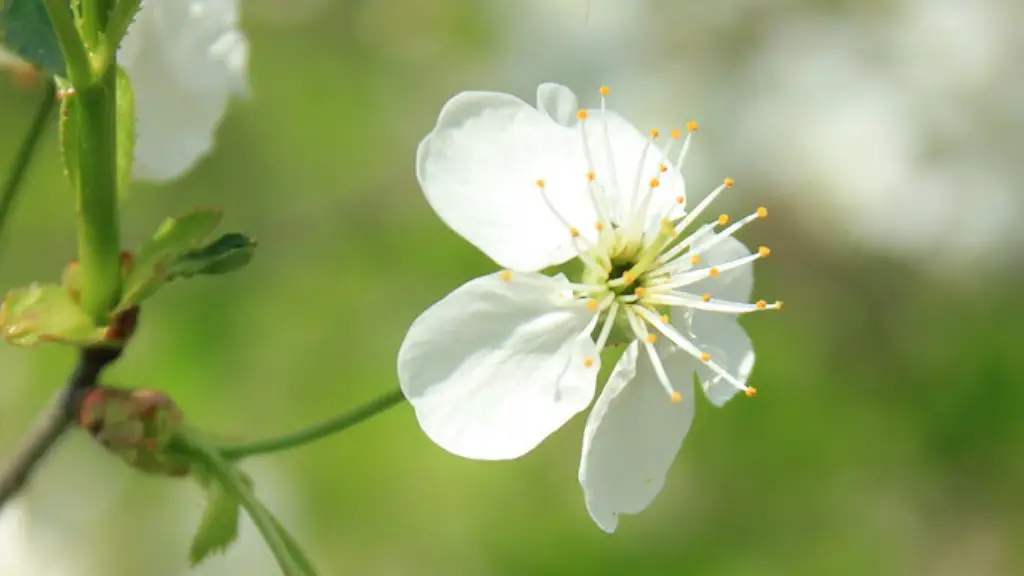Providing Care and Nourishment
Cherry blossom trees can be an attractive and fragrant addition to any garden, providing a captivating burst of color during the warmer months of the year. However, due to their fragile nature, these trees can sometimes be difficult to revive. To assist with this, here is a guide on how to revive a cherry blossom tree:
Water & Soil
Establishing a proper watering and soil regimen is essential for cherry blossom trees. When the soil is damp, it helps keep the tree healthy by providing the necessary nutrients. Make sure to provide plenty of water, especially during warmer and drier months, to keep the ground moist. You should also consider adding a thin layer of mulch around the base of the tree to help retain water and avoid its evaporation.
Fertilizers & Nutrients
Fertilizers and nutrients can help keep a tree healthy and growing properly. Depending on the type of fertilizer used, it should be applied to the soil three times throughout the year. Consider using a natural fertilizer such as liquid seaweed extract or composted manure, as this provides essential nutrients without harming the environment. Additionally, it may be necessary to use a specialized soil enhancer to provide more specific types of nutrients.
Pruning
Pruning is a critical part of reviving a cherry blossom tree. Pruning keeps the tree healthy and encourages new growth. Pruning should be done twice a year – in late winter or early spring when the tree is still dormant and again in late summer when the tree is actively growing. Ideally, only dead or damaged branches should be removed.
Protection from Pests & Diseases
Providing protection from pests and diseases is essential for keeping a cherry blossom tree healthy. Insecticides and fungicides should be applied regularly to keep pests and diseases at bay. Avoid using chemical pesticides, as these can damage the tree and surrounding environment. Neem oil and other natural insecticides are safer and more sustainable options.
Direct Sunlight
Cherry blossom trees need plenty of direct sunlight to thrive. Make sure the tree is receiving at least six hours of sunlight a day and adjust accordingly if it is not. Partial shade is acceptable, but full shade should be avoided. Additionally, make sure the tree is situated away from strong winds, as this can damage the branches.
Adapting to Climate Changes
Due to the fragile nature of cherry blossom trees, they must be able to tolerate and adapt to climate changes. This includes both rising temperatures and cold snaps. Cherry blossom trees should be planted in a location where they are sheltered from extreme weather conditions and where they are exposed to an adequate amount of direct sunlight.
Straightening Trunk and Branches
Straightening the trunk and branches of a cherry blossom tree is essential for helping the tree become structurally sound. To straighten the trunk and branches, gently apply light pressure on the affected area and tie a rope or flexible metal stake around it to support the new shape. This technique should only be done when the tree is still young and developing.
Frequently Test Soil Quality
The soil quality affects the health of the cherry blossom tree. To ensure the soil has the necessary nutrients for the tree’s growth, it is important to regularly test the soil’s pH level and nutrient content. This can be done through a soil test kit or by sending a sample to a professional agricultural lab.
Care After Blooming
After the cherry blossom tree blooms, it is important to continue providing care. Water regularly and prune any dead or damaged branches. Additionally, apply a slow-release fertilizer and use insecticides or fungicides to keep pests away. This will help ensure the tree stays healthy and vigorous throughout the growing season.
Monitoring the Tree’s Health
Monitoring the tree’s health is essential for making sure it remains in optimal condition. Check for any insect damage or discoloration on the leaves and bark. Additionally, look for any signs of disease, such as wilting leaves or yellowing branches. If any of these symptoms are observed, take necessary action immediately.
Getting Professional Help
If the above steps fail to revive a cherry blossom tree, it may be time to consult a professional. Professional tree care services are experienced in revitalizing trees, and they can offer necessary assistance in diagnosing and solving more complex issues. Additionally, they can provide advice on preventative maintenance to help keep the tree healthy.
Using Beneficial Insects
It is possible to use beneficial insects to help keep pests away from cherry blossom trees. Planting flowers such as daisies, sunflowers and alyssum around the tree will attract bees, ladybugs, hoverflies, and other beneficial insects. These insects can feed on many of the pests that would otherwise harm the tree’s health.
Adding Organic Matter
Adding organic matter to the soil is another way to ensure the tree is receiving the necessary nutrients. Composted manure, leaf mold and grass clippings are all excellent sources of organic matter that can help enhance the nutrient content of the soil. Additionally, these provide some insulation to the soil, which can help protect the tree’s root system in extreme weather conditions.
Decomposition of Organic Material
Organic material, such as leaves and twigs, should be left under the cherry blossom tree to decompose naturally. This will provide beneficial nutrients to the tree and the surrounding soil. Additionally, the decomposition of organic material will also help attract beneficial organisms, such as earthworms and fungi, which can help aerate the soil and facilitate healthier root growth.
Maintaining Humidity Levels
Cherry blossom trees thrive in areas with high humidity levels. In dry climates, a humidifier can be used to maintain the correct levels of moisture in the air. Additionally, a good layer of mulch can help retain moisture in the ground and reduce the amount of water required for the tree.



